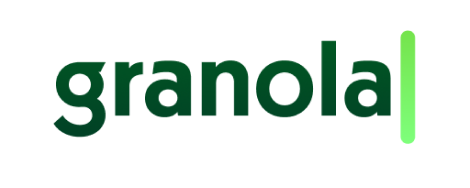Service NSW has a larger client base than most – 8,172,500 clients, or every single New South Wales resident, to be exact.
A government agency, Service NSW acts as a one-stop-shop for NSW residents who need to access government services online, via phone or in person at its service centres. Service NSW supports them with everything from transport, to fair trade, to rental bonds.
To empower employees behind the scenes, the Service NSW digital services team needed a collaboration tool that would help team members connect quickly, solve customer issues instantly and minimise any friction along the way.
Enter, Slack.
“Slack saw steady development at Service NSW. It started with our product teams, then scaled to our platform and enablement teams,” says Executive Director Katie McDermott, who heads up all of Service NSW’s digital services teams, at the recent Slack Frontiers Asia Pacific conference in Sydney.

McDermott explains that before Slack, effective team communication was difficult, as employees were at the mercy of slow email chains and were wasting time switching between apps.
“There was organic demand to make Slack the official tool, it was clear Slack was the collaboration tool of choice from the product, design and engineering teams”
“Email has a place, but internal team communications are via slack. Slack is the first port of call – our team loves the vibrant, engaging style of Slack!”
Replacing tradition with agile team communication
McDermott’s team has rolled out a number of successful initiatives to streamline communication internally, from creating collaborative channels for problem-solving to injecting some fun into their interactions with custom emojis.
McDermott and her fellow digital services leaders are now hoping to improve how government services communicate on a larger scale.
“We certainly acknowledge that we operate within a bigger ecosystem in government and partner agencies, so we couldn’t entirely remove ourselves from traditional means of communication, like email,” says McDermott.
“But the way we choose to communicate as a team is via Slack. And it’s been wonderful – it’s completely changed how we work,”
For example, McDermott has found the immediacy of communication to be a huge time-saver for the entire team.
“We’re no longer held up with the slow back-and-forth that comes with email. Instead of waiting half an hour for an email response, you can have a conversation immediately and thrash out so many issues in real-time.”
Service NSW’s Digital Services Team is one of many government and higher education organisations around the world that have taken the leap towards more efficient pastures.
For example, in the United States, the U.S. Department of Veteran Affairs and the U.S. Department of Defense both use Slack to coordinate complex campaigns and work together to solve pivotal problems, mobilise in times of crisis and serve citizens. In Australia, online higher education services like RMIT Online are also reaping Slack’s benefits; using the tool to develop and deliver courses quickly.
Creating more room for collaboration
As part of their mission to streamline customer service, McDermott’s team are harnessing digital identification to make Service NSW’s credentialing faster, easier and more secure.
Slack Channels—dedicated spaces to have focused conversations, share ideas, make decisions and move work forward—have become an invaluable resource for teams to collaborate and problem-solve in real-time, regardless of their working location, she says.

“Slack helps our team troubleshoot issues that come up, thanks to channels dedicated to problem-solving.”
While not all of the team’s daily tasks can be conducted via Slack, it is their go-to for internal collaboration.
“We’re quite deliberate in how we use it,” she says. “We don’t use it to share information with our customers, and we don’t use it to share information on our codebase. But for many other issues, we try to solve them using Slack.
It’s a great way to invite broader conversation and broader consultation, and it’s a nice way to bring what is a very big organisation into a small conversation.”
A customer experience makeover, powered by Slack
Service NSW is currently undergoing a period of structural change, with its leaders redesigning their ways of working to accommodate the ever-changing and diverse needs of customers.
“We’re talking about how we need to restructure things to set Service NSW up for the future,” says McDermott. “We’ve got a vision in mind, but the next step is how we consult with our teams on this.”
Rather than communicating their plans to various teams via a one-sided presentation with a formal invitation to give feedback, the executive team turned to Slack to spark real conversations about the planned initiatives.
“Slack helps us foster a culture of transparency at Service NSW. We’ve created a channel, we’ve published the proposed structure and we’re inviting open communication,” says McDermott.
“It’s a nice way to remove the secrecy in some of these processes. Everything’s in the open, and we want to hear from everyone – and it helps us make more informed decisions,”
“Slack has allowed us to become more transparent and flatten the organisation.”
Controlling risks and reaping rewards
Swaying government services away from more established communication channels and towards Slack has been a tall order from day one, says McDermott.
Digital Services overcame any concerns by going above and beyond to ensure safety and transparency in their use of Slack.
McDermott says they were able to lean on Slack’s enterprise-grade data protection and security measures at every layer.
“We did a risk assessment around different integrations, and we carefully considered which integrations were worth the risk for us, and how we would secure them,” says McDermott.
“We also did a very comprehensive risk assessment around how we want to use the tool, how we should use the tool, just because we had those doubts on the periphery and we needed to make sure we had the confidence of our customers and our peers.”
The overwhelmingly positive feedback from team members who use Slack has also been hugely influential in shaping the wider organisation’s perception of the platform.
“It’s their tool of choice. And that’s half the battle, right? If people are engaged with the tool, then everything else is easy,” says McDermott.
Bringing Slack into the future of government services
“In the next 12 months, I’d love all of Service NSW to be using Slack, and the public service more broadly in a couple of years,” says McDermott.
She points to her own initial scepticism of the platform as proof that Slack’s capabilities speak for themselves, even to the most reluctant user.
“Until you use it, you don’t get it. I’m embarrassed to say that for my first six months as the Chief Digital Officer, I wasn’t on Slack. I’d never used it. I was immersed in the government ecosystem and collaboration tools.”
McDermott initially questioned the calls to implement Slack because of concerns that her employees would become disconnected from the wider organisation.
However, her team’s insistence that she give it a try eventually did the trick, and she saw its value almost immediately.
“It’s a fun way to communicate, the design is vibrant and it just brings a bit of joy in how you communicate.”















